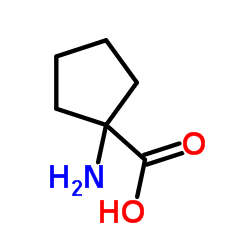Involvement of glutamate and cytokine pathways on antinociceptive effect of Pfaffia glomerata in mice.
Cristina Setim Freitas, Cristiane Hatsuko Baggio, André Twardowschy, Ana Cristina dos Santos, Bárbara Mayer, Ana Paula Luiz, Cid Aimbiré Moraes dos Santos, Maria Consuelo Andrade Marques, Adair Roberto Soares dos Santos
文献索引:J. Ethnopharmacol. 122(3) , 468-72, (2009)
全文:HTML全文
摘要
Pfaffia glomerata (Spreng) Pedersen (Amaranthaceae) is a medicinal plant known in Brazil as "Paratudo" and "Brazilian ginseng" and is commonly used as tonic, antidiabetic and to treat gastric disorders.This study evaluates the possible mechanism by which hydroalcoholic extract (HE) of Pfaffia glomerata exerts its antinociceptive effect.The HE was evaluated in acetic acid and glutamate models of pain or by biting behavior following intrathecal (i.t.) administration of agonists of excitatory aminoacids (EAA) receptors glutamate and pro-inflammatory cytokines, IL-1beta and TNF-alpha in mice.Oral administration of HE produced dose-dependent inhibition of acetic acid-induced visceral pain and glutamate-induced pain, with ID(50) of 64.6 (47.7-87.5)mg/kg and ID(50) of 370.8 (253.4-542.7)mg/kg, respectively. The HE (300 mg/kg, p.o.) antinociception, in the acetic acid test, was not affected by i.p. treatment of animals with naloxone. In addition, HE (300 mg/kg, p.o.) inhibited the pain-related behaviors induced by i.t. injection of trans-ACPD and TNF-alpha, but not by NMDA, AMPA, kainate or IL-1beta.Our results suggest that inhibition of glutamatergic metabotropic receptors and TNF-alpha may account for the antinociceptive action reported for the HE in models of chemical pain used in this study.
相关化合物
| 结构式 | 名称/CAS号 | 分子式 | 全部文献 |
|---|---|---|---|
 |
环亮氨酸
CAS:52-52-8 |
C6H11NO2 |
|
Quantitative structure-activity relationship and complex net...
2008-11-13 [J. Med. Chem. 51 , 6740-51, (2008)] |
|
In vivo stimulus-induced vasodilation occurs without IP3 rec...
2013-05-08 [J. Neurosci. 33(19) , 8411-22, (2013)] |
|
Drug design, in vitro pharmacology, and structure-activity r...
2009-08-27 [J. Med. Chem. 52 , 5093-107, (2009)] |
|
Quantal amplitude at the cone ribbon synapse can be adjusted...
2011-01-01 [Mol. Vis. 17 , 920-31, (2011)] |
|
Conformations of peptides containing a chiral cyclic α, α-di...
2010-11-01 [J. Pept. Sci. 16(11) , 621-6, (2010)] |